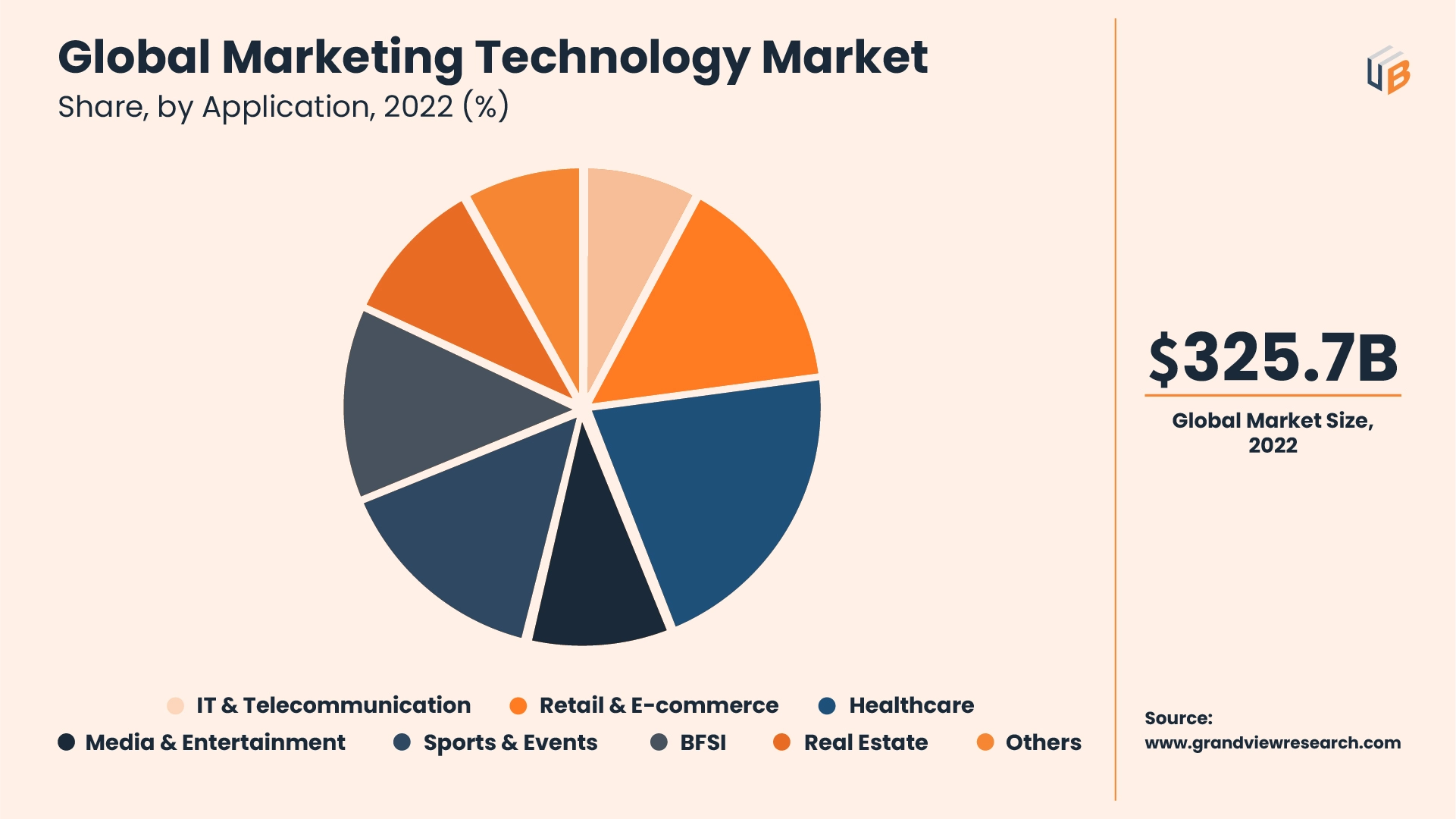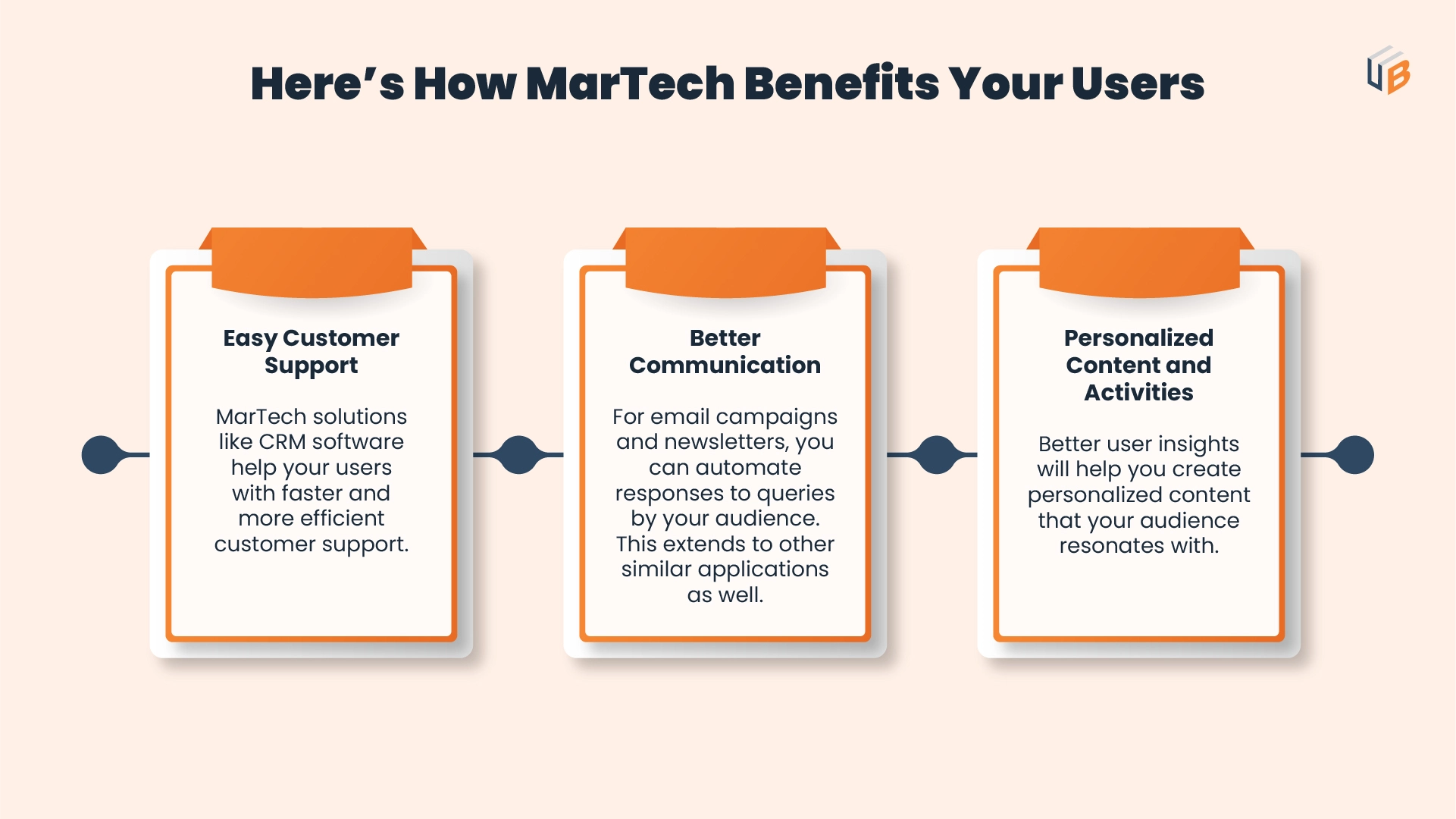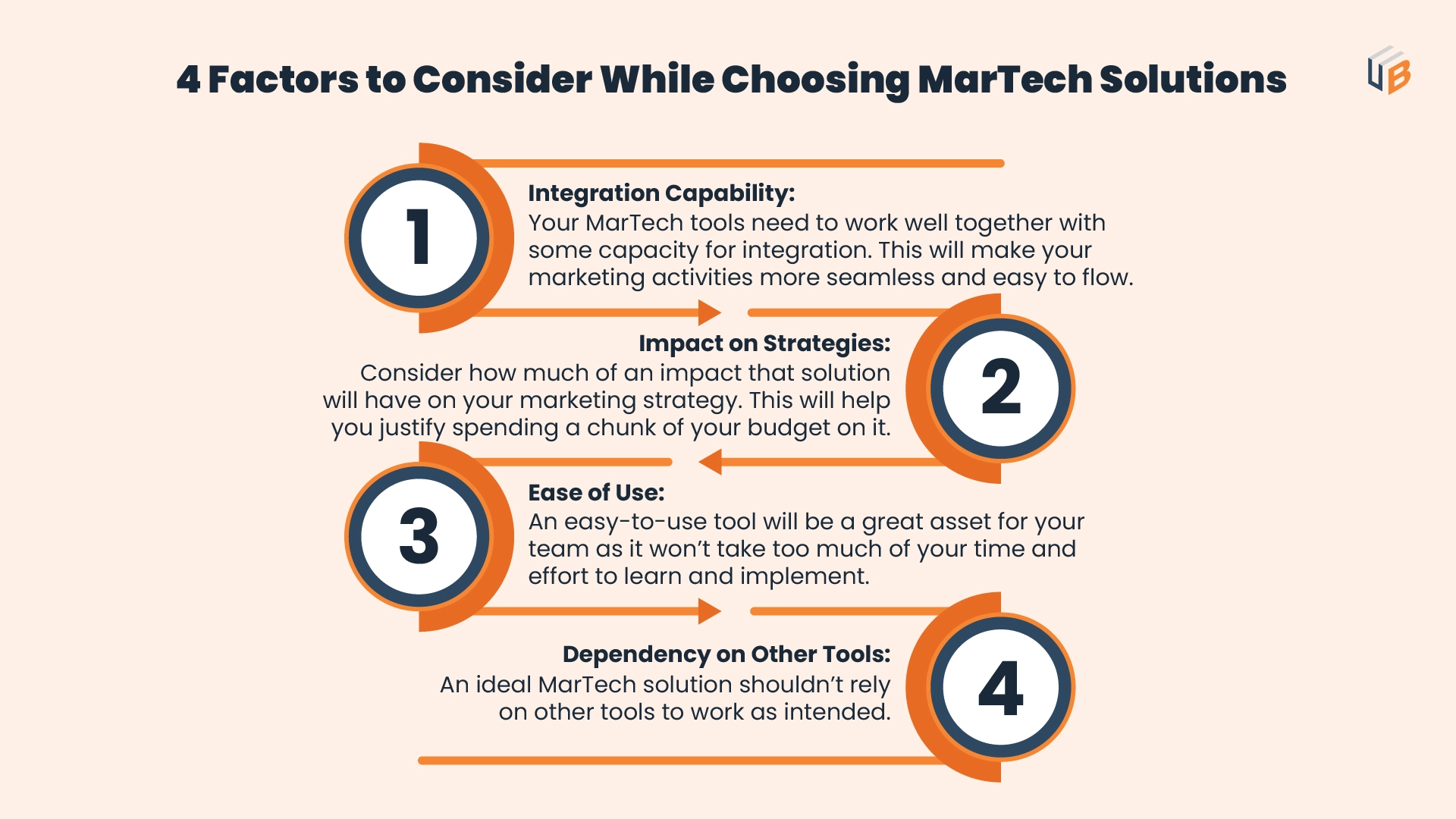
The best part of being a modern-day marketer is experiencing growing tech advancements first-hand. Most of our work involves implementing the right strategies and making the right decisions. And, it’s all thanks to the extensive availability of good marketing technology. But what exactly constitutes good MarTech?

I’d like to say that it all depends on your needs and use cases, but it goes much deeper than that. With a new year just around the corner, it is important that you identify and invest in ideal solutions. So, here are 6 steps to build a solid MarTech roadmap for 2024.
6 Steps to Build and Execute a Successful MarTech Roadmap
- Assessing Your Marketing Needs and Internal Alignment
- Identify Industry Standards and Audience Needs
- Set a Realistic Budget to Work With
- Choose the Right MarTech Stack to Fit Your Requirements
- Fix a Training Model and Standardize Usage
- Re-Evaluate Your MarTech Stack
1. Assessing Your Marketing Needs and Internal Alignment
Tools exist to solve problems. So, the first step to build your MarTech roadmap is assessing your marketing needs. These could range from a minor hassle to major barriers in implementing your marketing strategies.
Additionally, there is also a possibility of different departments needing different MarTech solutions. For instance, your paid marketing team will need access to a different set of tools compared to your SEO team. This means, you have to look at every possibility of needing a solution for your omnichannel marketing strategy.
When you get a complete grasp of your situation, you’ll better understand the scope of your MarTech investment and the gaps you need to fill. This step also acts as a prioritization period where you rank your problems from needing immediate attention to manageable inconveniences. While these things won’t be immediately useful, they’ll make your decisions easier when setting the budget and looking for suitable tools.
2. Identify Industry Standards and Audience Needs
Doing what your competitors are doing isn’t always the smartest way to do marketing. But, you need to have a fair idea of the industry standards to avoid missing out on potentially great solutions. With improvements to existing MarTech solutions and new alternatives coming to the market, you need to keep your eyes open.
Speaking of, you also need to keep your ears open and listen to your audience. If your marketing activities require involvement from your audience, there is a likely chance that they might be facing some or the other issues. You just need to figure out where these issues are to look for a solution.
Some common indicators in this case may be clear signs of engagement drops, conversion barriers, actual complaints by the users, etc. Once you get to know these signs, you can try to figure out how to solve their issues. Additionally, MarTech solutions like web analytics and anything that helps you with analysis are great for assessing your audience’s needs.

3. Set a Realistic Budget to Work With
This is the most defining step in building a MarTech roadmap. Regardless of the scope of your MarTech needs, you won’t always be able to invest in solutions for everything. So, you need to identify your budget limitations. Especially with recent global recessions your MarTech roadmap in 2024 needs a proper budget allotment.
After getting an assessment of your needs and prioritizing you’ll know an estimate range for the budget. The main challenge comes knocking when you have to get your board’s approval for it. Do your best to explain how introducing MarTech solutions will benefit the company and grow its revenue.
Once you set the budget, you will have to focus on dividing it into all major areas that you need to improve. Now, each company has its own priority for the budget. But, according to a study by Gartner, marketing leaders planned to spend 25.4% of their marketing budget on MarTech. Over 25.7% of that went to paid marketing solutions.
4. Choose the Right MarTech Stack to Fit Your Requirements
This stage is the meat of the process to build your MarTech roadmap. It is all about finding the right MarTech solutions on the market. This is where a clear understanding of your needs will help immensely.
One thing to remember is that there won’t be any one-tool-for-all that solves all your problems. So, you will have to work with several different tools and vendors to figure out a personalized MarTech stack.
Here are some factors to help you choose the right tools:

After careful consideration of these factors and finding potential solutions, you need to work on implementation.
5. Fix a Training Model and Standardize Usage
Once you have your tools ready, you and your team will need to know how they work. Many MarTech solutions can be personalized to fit your process. But, in case that isn’t an option, you need to set a training model.
Many vendors offer plenty of resources like on-demand or live webinars, tutorial videos, articles, etc. to train your employees. Make sure you introduce those resources to your team and provide a clear outline of what they need to learn. In the same vein, you should implement this training module for new recruits as well.
Once your team has enough hands-on experience with the tools, you need to standardize a process for using them. This is an important step as it ensures that your team doesn’t jeopardize the tools or do something that affects your operations negatively.
6. Re-Evaluate Your MarTech Stack
Your 2024 MarTech roadmap shouldn’t be an end-all-be-all strategy. You need to plan ahead for a mismatch in tools and incorporating other solutions down the road. To ensure that you’re using your budget wisely, you need to evaluate your MarTech stack.
As I said earlier, technology in marketing changes and improves at a rapid pace. So, you will come across better solutions in a few years time. If you schedule re-evaluations every year or twice a year, you can stay on top of MarTech trends.
On the other hand, re-evaluation in your MarTech roadmap helps you find solutions that aren’t providing as much ROI as you would’ve hoped. All in all, you can manage your budget, find better alternatives, and assess the ROI of your MarTech stack just by evaluating it.
Setting the Right Foot Forward in 2024
When you plan to invest thousands of dollars in MarTech, you need to know where you are putting it all. If you want your 2024 MarTech roadmap to be successful, you need to acquire solutions that support future marketing trends.
AI solutions are big right now. There is a very good chance that a lot of the hype will slow down until you get better tools. Instead, you need to look at trends like the growing use of intent data, better digital asset management solutions, and more. Apart from trends, keep an open eye for new tools that will offer better solutions for cheaper packages.
If you do these things right and keep your MarTech roadmap flexible, you will find marketing success.
Our blog
Latest blog posts
Tool and strategies modern teams need to help their companies grow.

Running a business comes with its own set of challenges, especially when it comes to ...

AI is surely a futuristic concept but it evolves today, particularly in sales and mar...

A successful webinar requires more than just a great speaker and a compelling topic. ...






